Oru Inlet folding kayak [ULTIMATE 2-YEAR REVIEW]
Two years ago, I purchased a brand-new Oru Inlet kayak from REI. You probably saw them on Shark Tank, too. Or maybe you read their folding kayak feature in National Geographic Magazine’s February 2023 article “The Future is Folded” about how the art of Origami has inspired innovation. Or perhaps you were deep in a foldable kayak Reddit thread or inspired by Instagram kayak quotes and nature quotes.
Whatever the case, Oru struck a chord with a lot of us recreational kayakers – our need for a highly portable, lightweight, easy-to-store-and-transport boat, that doesn’t sacrifice on safety or performance.
When I relocated with my family out of New York City to Portland, Oregon during the 2020 height of the pandemic, buying a recreational kayak was top of mind for me. I desperately needed to get outside and back in nature. But I really needed a folding kayak that would easily fit in the trunk of my small SUV, and a boat that was light enough to carry by myself from the parking lot to the water.
And here we are, over two years later.
So, after 100+ paddling hours and many, many kayaking miles, is this original origami foldable kayak any good?
Read on for my full Oru Inlet kayak review, unsponsored and unfiltered….
This website is unsponsored by Oru, but it does contain affiliate links, meaning if you purchase through my link, I’ll receive a small commission at no cost to you.
Oru kayak review article table of contents
This is a very thorough, in-depth Oru Inlet kayak review, so click a link from this table of contents if you want to jump ahead to a particular section to support your foldable Oru kayak research.
My in-depth Oru review on the Inlet, with pros & cons and important factors to consider,
A bonus Oru Paddle kayak accessory review after one year of use,
The “Too Long; Didn’t Read” (TL;DR) summary of my Oru product review,
Comparison of all calm water Oru foldable kayak model options,
Where to buy an Oru kayak online (and how you might score a good deal), and
Quick links to our top-viewed Oru Kayak posts on Flatwater Kayak Club.
Throughout this article, there are also several videos of my Oru Inlet kayaking adventures across the Pacific Northwest, if you want to see some of the boat’s key features in action.
Why I wanted to buy a folding kayak
My kayak purchase objective was pretty straightforward from the start. I had tried out some inflatable kayaks, and I wasn’t interested in going that route with my new kayak purchase in 2020. But storage and transport was top of mind for me.
I was renting a small space home in Portland, Oregon, with no garage and just some available storage in a basement (which, obviously, would require lugging gear up and down stairs, which isn’t an easy feat if you have a heavy kayak!).
And I own a Toyota RAV4 – a compact SUV – with a decent-sized trunk, but not the most spacious if you’re comparing to pick-up trucks or large SUV models, of course. I wouldn’t be able to lift a traditional kayak onto my roof rack on my own.
This is a term used by many people in the outdoor industry to refer to folding kayaks, however the company Oru has stated that the art of Origami inspired their folding kayak design innovation.
As a flatwater kayaker, I knew I wanted a boat that would perform as well on lakes, rivers, and ponds with minimal currents, waves or boat wake traffic, as well as it would on mirror-flat water surfaces.
I’m not into rapids, harsh conditions or high waves, sea kayaking, and didn’t have a need for a two-person tandem kayak. But I liked the idea of a sit-in kayak with an open cockpit so my little dog could join me too.
A must-have for me was a fold out kayak that would be convenient and compact to throw in the trunk, and light enough that I could carry by myself with my paddle, dry bag, life jacket, and other gear.
And I really, really didn’t want it to be a pain in the neck to put together or collapse down.
And, overall, I wanted the best packable kayak that just made it easy to get out on the water near my residence in Portland, Oregon.
Whether for quick paddle after work at one of my favorite spots, like Scappoose Bay, or a full day’s kayaking adventure experience at Trillium Lake near Mt. Hood, I didn’t want the excuse of hauling a heavy, bulky kayak to stop me from getting outside and enjoy all that the PNW has to offer.
I wanted freedom and ease, without compromising on durability and experience. For me, a foldable kayak fit the bill as a great way to have it all.
But was a plastic kayak worth the additional cost of folding design innovation? I wasn’t sure.
[NEW POST: The future of outdoor adventure and AI technology]
About the Oru Kayak company
I first learned about Oru from Instagram years ago, but the Emeryville, California-based kayak company has been featured on Forbes, CNN, Oprah Magazine, and SharkTank. Oru Kayaks also have quite a large cult following on social media, Reddit forums, big outdoor lifestyle brands, and kayaking influencers and aficionados.
Inspired by the art of Origami, the Oru founders created 25 prototypes of folding kayaks before their first design hit Kickstarter in 2012.
According to the company website, Oru Kayak’s folding kayak technology was inspired by the art of Origami, and backed by 10 years of innovation, design, and testing (you can learn more about Oru in next month’s National Geographic Magazine article feature too).
While I was first drawn to the idea of a highly portable and lightweight kayak – I’ve owned heavy, bulky recreational kayaks before that were a pain to transport – there were also other reasons I was initially interested in supporting the outdoor lifestyle company Oru with my consumer dollars.
I value that Oru believes in connecting people to nature–that it’s a deep human need. The company does this by helping people connect with the water. If you’ve read about why I founded Flatwater Kayak Club – and my bio – then you can imagine that Oru Kayak’s company mission really resonated with me as well. It’s also worth noting that in 2021, Oru was acquired by Solo Stove.
It’s worth noting that there are other folding kayaks on the market, for those doing extensive research in this area.
This Oru Inlet review post does not provide a compare and contrast with these models, but here are a few other folding kayaks that you may also want to consider with your online and paddle shop research:
Payak Bluefin 142
Tucktec
TRAK 2.0
Mark I Long Haul
Aerius 490 SL
Neris Smart
About the author of this article
It’s nice to know a bit about people writing reviews, and if they have any life experience related to the products of interest, so here’s a little about me.
I’m Jodi, an American Canoe Association (ACA) member and the founder of Flatwater Kayak Club, LLC, the leading woman-owned kayaking lifestyle business in the USA, and based in the beautiful Pacific Northwest city of Portland, Oregon. I also have a current, active certification in Adult & Pediatric First Aid/CPR/AED by the American Red Cross.
Water activities have always been an integral part of my life, and I’ve spent nearly forty years swimming, boating, and paddling on the water. I grew up in a family of sailors, enjoying countless hours on our sailboat on the Great Lakes.
Fast forward some years, and I’ve built my entire professional writing career around the Great Outdoors. I’m known for my former freelance wildlife and travel journalism work, with my adventures writing for the National Geographic Channel and Nat Geo Wild taking me all over the world – from coastal Florida to the jungles of Malaysian Borneo. I’ve written thousands of pieces of content for magazines, websites, and brands over the years, including whale shark research articles for the Webby Award-nominated Great Migrations Nat Geo Channel television series website.
I love flat water kayaking, and one of my passions in my adult life is sharing this incredible outdoor activity with others looking for more movement, peace, and nature in their lives.
Why I decided the Oru Inlet kayak was the best collapsible kayak for me
At the time of my initial purchase two years ago, Oru didn’t have many foldable kayak models available – just a couple compared to their now-robust portfolio that really cater to all types of kayakers and water experiences.
There also weren’t nearly as many great folding kayak, inflatable kayak options, or honest review sites on the market that there are today. I did a lot of kayak research, because forking over $1k for a recreational kayak was a definite splurge for me at the time.
But Oru definitely captured my interest with all the Internet, television, media and Reddit forum buzz.
The Inlet kayak has been billed by Oru as the “lightest, most portable, and easiest to assemble folding kayak YET – an origami kayak for everyone.”
The Oru Inlet kayak was designed for flat water paddling experiences, so that was an immediate match for me in that regard. The specifications sounded great – it was still a full-size kayak, but without the stress of carrying a heavy kayak or dealing with challenging kayak storage.
Oru kayak durability was a bit of unknown for me as a consumer, with this kayak being such a new innovation in the water sports niche, but Oru did a lot of great marketing about how the testing on the materials and folds.
And, after watching their assembly and disassembly videos of the Inlet’s unique folding design, I felt like it looked simple enough to set it up and collapse it by myself.
Oru Inlet origami kayak specifications
Length is 9’8” (295 cm), but the boat folds down to a compact box.
Width is 31” (79 Cm)
Cockpit is 23” x 44” (111 x 58 Cm)
Weight capacity is 275 pounds (125 Kg)
Kayak box dimensions are: 42” x 10” x 18” (107 x 25 x 46 Cm)
Weight is 20 pounds (about half the weight of a traditional kayak).
Set-up time is 3-5 minutes
Oru Inlet features and benefits –
Did it hold up to the promises during my testing?
Easy to transport and store (ideal for people who love to paddle but are limited in storage space)
Stable, but nimble and playful
Intended for calm water only
Open cockpit
Suitable for beginner paddlers, but anyone who enjoys recreational kayaking
Made from 5 mm double-layered, custom-extruded polypropyelene (basically a super strong plastic that are puncture and abraision-resistant).
Product is strong enough to withstand sliding over rocks and bumping into obstacles. (Within reason - see below regarding fairings repair).
The Inlet was tested to hold up to 20,000 folds.
30-day return guarantee, with a 1-year Inlet kayak warranty
Oru also states that the Inlet kayak “tracks and handles far better than inflatable kayaks.”
A lot of incredible product features - but as a more expensive lightweight kayak model, are Oru kayaks worth it?
My Oru Inlet kayak review
After two full years of real life product testing–across multiple states and flat water kayaking conditions and paddling routes–here are my honest, unsponsored, unfiltered Oru Inlet folding kayak thoughts.
Some of the places I’ve gone kayaking with my Oru Inlet
Willamette River (Portland, Oregon)
Scappose Bay (Scappoose, Oregon)
Tualatin River (Lake Oswego, Oregon)
Deschutes River (Bend, Oregon)
Lake River (Ridgefield, Washington)
Trillium Lake (Mt. Hood National Forest)
Lost Lake (Mt. Hood National Forest)
Vancouver Lake (Vancouver, Washington)
Base of Willamette Falls (Oregon City, Oregon)
On these kayaking adventures with my origami kayak, I’ve endured different flat water kayaking conditions and spotted some incredible Pacific Northwest wildlife species from my boat, including bald eagles, sea lions, black-tailed deer, egrets, herons, osprey, and even one cute little river otter.
My Oru Inlet folding kayak review: Pros
Lightweight
I’m super happy in this area. I carry my 20 lb Inlet by myself every time I paddle. When you’re balancing a bunch of gear, and if you’ve got a long walk (like I did once on a trip out to Trillium Lake), I might have to switch hands gripping the handle once or twice, but it’s honestly such a great, portable, convenient kayak.
So many kayaks are heavy and require two people to carry. This is a light kayak!
We bought our second Oru Inlet kayak in April, 2023.
Easy to assemble and disassemble
Can you really take the Inlet from “box to boat in minutes” as promised by Oru?
Yes! The estimated 3-5 minutes assembly time for this Oru foldable kayak is calculated about right for me (especially these days, I really know what I’m doing). In the beginning it took me more like… under 10 minutes to put together.
For any new/prospective Oru kayak owners, it’s imperative to know how to properly assemble your kayak before paddling out on the water. Don’t rush through it and compromise safety.
Before hitting the water, I always do a thorough safety walk through on all the steps after I put it together, so that may add on a couple of those minutes.
See the folding kayak Oru Inlet in action with my video from a recent Oregon kayaking adventure
Breaking down the Inlet into its collapsed, handy box shape is about 2-3 minutes–super fast and easy. People are always so impressed when they watch me from the dock, beach, or water’s edge!
I was glad I watched the Oru kayak assembly videos first and practiced becoming familiar with the kayak parts, assembling, and disassembling my Inlet in my yard before I went out on my first paddle.
I felt much safer and confident when I experienced my first voyage (which happened to be an incredible kayaking encounter with wild sea lions hunting, but that’s a story for a different day).
Another thing was, I had not anticipated how much attention this kayak would draw from other people – I’m talking stares, questions, people filming me, you name it.
This kayak draws a crowd! I am glad I wasn’t distracted by all the attention I was receiving and knew what I was doing in those moments so I could enjoy a safe and fun paddling experience with my foldable Oru.
Compact & easy transport
The folded Oru Inlet ends up being the size of about a large suitcase (it has a carrying handle, but there are kayak accessories like carrying bags if people want to buy them separately from the Oru kayak website).
The folding Oru Inlet is also compact enough to easily fit in my vehicle trunk. And with a paddle and various kayaking gear too.
You can see more photos of the Oru Inlet folding kayak in my RAV4 trunk here.
Small storage kayak solution
For the first year I owned my Oru Inlet, I kept the kayak collapsed in box form in my small space basement that I mentioned in this article intro. It was so nice to not worry about needing full-size kayak storage or leaving it in the backyard exposed to the elements.
These days, I do have a garage and could have full-sized traditional kayak storage if I needed it, but the Inlet takes up little space and is really great in this category.
As someone who lived in New York City for ten years, I could really see the Oru folding kayak designs catering to someone who lives in an urban environment and has little extra storage. It might be more challenging to stuff into a closet because of its wide base, but depending on furniture designs, could slide under a bed or couch when not in use.
Great stability & tracking
It’s pretty amazing how solid the boat feels when you’re on flat and slow-to-medium moving water. Conditions and paddling routes are key here, so my stability review is referencing calm water kayaking. (I have rented a bunch of hardshells over the past year for kayaking around the Willamette River and Tualatin River Trail in Oregon, and these were notably more stable and solid feeling in stronger, more swift-moving water currents).
All in all, I’d give the Inlet solid marks in the stability and tracking categories. Even with it being a light kayak and made from a relative thin material, I’ve never felt unsafe and I’ve never flipped over.
While the Oru Inlet kayak was designed with beginners in mind, it’s certainly great fun and high performing for intermediate and experienced kayakers as well.
WATCH NOW: Kayaking with my foldable Oru Inlet kayak in Hood River, Oregon
Roomy cockpit
Great marks here from me! Enough space to comfortably have my dry bag, dog, and water bottle. (I always wear my PFD - and so should you!). Easy for kayak entry and exit.
Passionate Oru community
It’s so interesting, the first summer I was off exploring with my Inlet kayak, spotting another Oru in the wild was an extremely rare occurrence for me in the Pacific Northwest.
Well, guess the secret’s out about this folding kayak, because this past summer, I saw a bunch more out boats there! Everyone always wants to chat it up and share thoughts on our Oru kayak models.
When you paddle an Oru, it’s easy to make friends! I compare it to how it felt back when I owned a Jeep Wrangler… There’s a similar outdoor enthusiast comradery with Oru ownership and joining the “kayak oru” club.
Oru recently started promoting this community called the Oru Host program. It’s basically an application program to become a “Host” in their Explorer community, and locate local Oru paddlers to connect with in conversation and a discount on Oru products (even advance sale opportunities).
While I haven’t yet tried their Host program, as an avid Oru Inlet fan and product user, I am considering applying to “officially” connect with more Oru-kayaking locals in the Portland, Oregon outdoor community.
Kayaking fun
The Inlet water kayak really does make paddling fun. I truly go calm water kayaking all the time during the high season here in Oregon and Washington, and it’s continued to fuel my passion for recreational kayaking and strong desire to create a stronger, more conservation-focused flat water kayaking community launched this Pacific Northwest-based business, Flatwater Kayak Club.
I have had so many incredible experiences on the water in my Inlet origami kayak, from spotting wild bald eagles in Ridgefield National Wildlife Refuge to admiring the beauty of Mt. St. Helens from my boat, and an even greater appreciation for our beautiful outdoors and strengthened resolve to restore and protect our water ways.
Ridgefield National Wildlife Refuge Oru Inlet kayaking experience in Washington
Great Oru customer service
Good to have when you need it! The first Inlet I received from my REI purchase ended up have a small crack in the kayak material due to a quality control issue/defect. Oru’s customer service team replaced that Inlet right away (the only gripe I have about that is I lost about a month of prime PNW kayaking season due to the delay).
As mentioned above, the Inlet comes with a 1 year warranty.
The second Inlet kayak I received is the one that I’ve been using over the last two years, and it’s been durable for me. I did have to replace the fairings last summer, which seemed reasonable, after so much use over the last two years.
You can learn more about Oru kayak maintenance here.
During my second year of owning my Oru Inlet folding kayak, I had to replace the front (bow) fairings. This was easy to do.
Oru sent me the front (bow) fairing replacement part free of charge, and I wrote about replacing the Oru Inlet bow fairings here. There’s a video on how to change the fairings if that’s helpful to you as well. (Boat anatomy language tip: bow is the front for the vessel, stern is the back).
My Oru Inlet foldable kayak review: Cons
The low-profile seat on the Inlet isn’t that comfortable, in my opinion. I don’t really notice that fact until I’ve been out paddling for over an hour, but then I get a little squirmish in my seat.
The Inlet isn’t the best single person kayak choice for high wind or more intense wave conditions due to the open cockpit design (spray skirts are available, but this folding origami kayak wasn’t designed for choppy waters). Every folding kayak owner should invest in float bags as well for safety, know how to properly do a wet exit, and wear kayaking clothing for water immersion.
Oru now has more ideal kayak options if you plan on kayaking in choppier water conditions. I had a few times out on lakes where the wind was stronger then I planned, and I ended up turning back to shore because it was just too wavy for my Inlet, like on Lost Lake one time. (If my memory serves me right, I do think that Oru updated their Inlet description text to reflect this “best for calm water” feedback in since my initial Inlet purchase was made).
Long-term durability of my Oru Inlet going into this summer season is still a question mark for me.
While my Inlet has held up over the past two years of lots of Pacific Northwest flatwater kayaking, I’m starting to wonder when it’s going to eventually crack.
I don’t know how many thousands of folds it’s endured (who’s counting folds, really?) so I’ve been giving it a solid safety check every time I head out on the water. As I mentioned before, I needed to change out the fairings last summer.
Now that I’m two years into significant use paddling around Portland, Oregon and beyond, I do feel a bit of a ticking clock happening for when it’ll no longer be usable.
I feel like I’ll need to invest in a new single person kayak going into this PNW kayaking season (year 3 of Inlet ownership, kayaking between the months of April-October).
Another con for those shopping for a kayak on a budget: The Oru Paddle accessory is not included with a purchase, and I think this is a downside for many beginners looking to buy a new kayak. Also, float bags are not included – and they should be.
And, at a price sticker of just around $1,000 – depending on seasonal discounts – it’s worth noting that the Oru Inlet folding kayak isn’t cheap, so for kayakers on a budget for new gear, the cost of a new Inlet can be a hard pill to swallow.
There are bundle options available though for people looking to buy the new gear in a package. For those watching their dollars, it’s worth noting that the Lake+ kayak is a bit cheaper than the Inlet. I did a full compare and contrast Oru Inlet vs Lake article here.
It was a bit of a summer splurge for me to buy it brand-new from REI myself two years ago. But, I still think the cost of the innovation ended up being worth it in the end for me, because the convenience factor had such a strong weight in my buying decision.
If you’re interested in financing your new kayak, I’ll add that Oru offers that financial support as well. At the time of this post, they have a 0% APR financing offer on their website.
Oru also offers refurbished kayaks for sale on their website. At a $200 price reduction from a brand-new kayak, this may be a preferred option for many people looking to get into kayaking for the first time.
The Oru company website states that their refurbished kayaks are “considered unused and have not been paddled on the water” and “fully inspected to meet the functional quality standards of a new Oru.” Limited inventory is available.
Since I bought my Oru Inlet kayak brand-new, I can’t speak to the refurbished kayak experience.
My Oru Paddle kayak accessory review
About a year into my Oru Inlet kayaking adventures, I bought a paddle from the company as well. I also own a Bending Branches Whisper Paddle.
My Oru Paddle is white, and breaks down into four pieces. Like their other products, it’s designed to be portable and convenient to use, without caving on performance.
While the company states the Oru Paddle can fit in their folded kayak’s boxed forms… I’ve never really gotten the products to magically Tetris quite like that. I usually just break down the Oru Paddle to fit in my vehicle trunk (super easy) and then carry it assembled from my SUV to the water or dock. That’s honestly been fine for my purposes.
The Oru Paddle breaks down into four pieces, which makes it easy to carry and store.
The Oru Paddle shaft is made of a lightweight fiberglass material, which has proven to be durable and performs well on-water. The blades are ABS plastic and paddle really well. You can also adjust the length between 220-230cm and the feather angles of the blades. Overall, happy with the Oru Paddle.
One thing I’ve noticed on my Oru paddle is that a main screw loosens occasionally (the one by where you can adjust its length), which requires a small screwdriver to tighten up. I always have my Leatherman multi-tool pocket knife on me, so it hasn’t been an issue, but just something to keep in mind so you’re not up a creek without a paddle.
My Oru kayak review summary
Here’s the TL;DR for my “two-year Oru Inlet kayak review” article skimmers:
After two years of paddling rivers, lakes, bays, and ponds of the Pacific Northwest in my Oru Inlet kayak, I am very happy with the product and I think it was money well-spent.
I have used this kayak quite often over the last 2+ years. Durability going into year 3 is a question mark.
The pros absolutely outweigh any of the cons I mentioned, in my opinion.
The simplicity of getting from home to the water and spending more time in nature is really the highlight and selling point for me.
The convenient Oru Inlet takes the hassle out of kayaking transport.
Every Oru kayak owner should know how to properly assemble their kayak, do a thorough safety check before heading out on the water, wear a PFD, and invest in float bags.
After a stressful day of work–when I can’t stare at a screen any longer–or a long week solo-parenting, when my brain is fried and my patience is on the last straw, I can have my kayaking gear ready in just minutes.
I’m off in the car with my dog and on the water in no time– and find myself calmer, more peaceful, more appreciative, and healthier in mind, body, and spirit, after just a short time on the water.
Recreational kayaking has brought me so much joy over the past few years. The convenience of Oru’s folding kayak is a lot of the reason I’ve been able to explore nature so easily and quickly as a solo 40 year-old woman.
If any of your new kayak wish list items match mine, I hope you’ll find that an Oru folding kayak works for you as well.
FAQ's about Oru kayaks
Need quick answers to the top-asked questions about Oru’s origami kayaks and folding designs? Here you go.
Is Oru Kayak still in business?
Yes. The Oru Kayak company was acquired by Southlake, Texas-based Solo Stove in 2021, joining their house of brands focused on adventurous lifestyle products.
How long will an Oru kayak last?
Oru kayaks have been tested for durability up to 20,000 folds. An Outside Online article revealed that the kayak lasted for a year of heavy usage, stating that the boat held up “significantly well,” while Flatwater Kayak Club’s founder tested an Oru Inlet on calm water lakes, rivers, and bays in the Pacific Northwest, stating that it lasted for over two years of frequent prime season use.
Will an Oru kayak sink?
Oru kayaks are made from 5 mm double-layered, custom-extruded polypropyelene (a super strong plastic that are puncture and abraision-resistant), so they are naturally buoyant and won’t sink even if they’re submerged in water, according to the company. We always want to emphasize safety, so wear a PFD at all times, invest in float bags, dress for water immersion, and know how to do a water exit, just in case.
Are foldable kayaks worth it?
For recreational kayakers who prioritize convenience, portability, and lightweight, compact, and easy-to-store-and-transport outdoor products, foldable kayaks can be worth the financial investment.
What is the difference between Lake and Inlet Oru?
There are several key differences between the Lake+ and Inlet kayak models. The Oru Inlet kayak is longer, has a higher weight capacity, and is a slightly heavier boat. The Lake+ model is the lightest, most affordable, and fastest-to-assemble Oru folding kayak option on the market, but provides a bit less space and cargo carrying capacity.
How much does an Oru Inlet weigh?
The Oru Inlet folding kayak is a lightweight kayaking, weighing only 20 pounds. This is about half the weight of a traditional kayak.
How much weight can an Oru kayak hold?
Oru kayaks vary in weight capacity depending on the boat model. The Lake has the lowest weight capacity at 250 lbs (113 kg), while the tandem kayak Haven TT has the highest, supporting up to 500 lbs (226 kg) in weight. The rest of the Oru models – Inlet, Beach LT, Bay ST, and Coast XT – have weight capacity limits somewhere in between.
Can you fly with an Oru kayak
Yes, you can fly with an Oru folding kayak. It will count as your first piece of checked luggage, and the fee varies per airline ($25 and up). Oru recommends invested in the Oru Pack, which is a heavy-duty nylon pack designed to protect your boat during travel and for carrying comfort.
Comparing the Oru folding calm water kayak models
These days, the Oru company offers a lot more foldable kayak options to consumers who identify as beginner recreational kayakers.
If you’re still thinking about which option is best for you, here are a few of those product highlights for flatwater kayakers in our Flatwater Kayak Club online community:
Oru Lake and Lake Sport: The newest, lightest, and most portable Oru folding kayak option for beginner single kayakers. Weighing in at 18 pounds, the Lake can be assembled in just one minute. Best for calm water kayaking and offers a stable experience for kayaking newbies. The Oru Lake kayak garnered huge interest and funding from Kickstarter, and there are currently two models for sale, the Oru Lake and Oru Lake+ (plus - now called Sport) options. (We did an in-depth comparison post of the Inlet vs Lake+ origami kayaks here). I bought an Oru Lake+ for the 2023 holidays (a gift to my son) and we are SO excited to take it on our 2024 kayaking trips!
Oru Inlet: The original folding one person kayak from Oru, and the one I review in this ultimate review post. Weighs 20 pounds and can be assembled in 3 minutes. Best for flat water kayaking experiences, as I shared in my review, and a lot of great fun for beginner calm water kayakers.
Oru Beach LT: The longest kayak of the calm water single kayak model options from Oru. This folding kayak weighs 25 pounds and can be assembled in about 5 minutes time. (This model may require a permit in your state due to its length, so do your kayak permit research). This kayak provides a higher weight capacity limit, suiting kayakers who weigh up to 300 pounds. This is also the most expensive of the three, but it offers the most cargo capacity, so it’s ideal for full day trips and picnicking kayak adventures. (We reviewed an extensive Oru Inlet vs Beach LT foldable kayaks post here and our full review of testing the Oru Beach LT kayak here).
Haven TT: This is the tandem kayak (double kayak) model from Oru designer for calm water paddlers. Designed to give you the best folding kayak experience for two people kayaking together, it also has the unique innovation of converting to a single person kayak when you need it. Weighs 41 pounds, so much more than the other three calm water kayak options, and is more expensive, but it offers the highest weight capacity and cargo options of these calm water kayaking options. The Haven TT foldable kayak is best for those with kayaking experience as well.
The Oru Beach LT is another flatwater kayak model, which is taller when folded up, and comes with a handy shoulder strap.
Let’s talk about kayak colors: Back when I purchased my first and the original Oru kayak design model, there was only the classic clear-white-translucent color available to buy.
In the last year, Oru has introduced some really cool recreational kayak colors to the market, including the black kayak edition, blue kayak edition, and green kayaks. Note that not all these kayak models are available in all colors. At first I questioned the safety and visibility of these color options, but Oru did add reflective material to the kayak exterior color palette as a safety precaution in low light visibility or night time kayaking.
UPDATE FOR ORU KAYAK x FLATWATER KAYAK CLUB IN 2023:
Our business just purchased the Oru Inlet collapsible kayak in green color from the Oru company website.
We also bought the Oru personal flotation device (PFD) life jacket and an Oru kayak camera mount for our new boat.
We look forward to sharing more great flat water kayaking content with Oru in 2023 here in the Pacific Northwest as we head out on paddling adventures throughout Oregon, Washington, and Idaho – and maybe beyond :)
Oh – and if you’re looking for more recent colors and patterns – as of February, 2023, Oru Kayak launched a limited Oru Inlet Print Edition, which takes their branded transparent-clear kayak design up a notch with organic, green detailed elements.
Explore more of the kayak options, colors, and accessories on the Oru company website.
ACA member and our Flatwater Kayak Club founder paddling on Lake Trillium in Oregon.
Oru kayaking accessories
The Oru Kayak company offers a ton of different accessories and paddling gear items to support outdoor enthusiasts on their kayaking adventures. Some of the key items from their online shop include:
Oru Paddles in different blade color options (white, black, blue) and a carbon paddle option
Oru LED light kit
Oru PFD (life jacket)
Kayak skeg
Oru kayak packs (great for those looking for a backpack kayak)
Float bags
Waterproof backpacks and dry bags
Neoprene kayak spray skirt
Adhesive mounts for cameras and phones to film kayak adventures
Cup holders
Repair kits & more
From the above list, I have personally bought the Oru Paddle and repair kits (which I haven’t used, beyond the fairings replacement I mentioned earlier, but feel like it’s a good safety thing to have on-hand if needed).
In 2023, I also bought the Oru PFD life jacket and it’s been an essential kayaking accessory upgrade in my life – it’s easy to make it fit well (snug and safe), and there are two handy pockets in the front for your phone and essentials you want close at hand.
Where to buy an Oru kayak online
Hopefully this kayak oru review article was helpful to support your foldable kayak research.
If you’re ready to buy – or need to dig a little deeper into research – here are some handy links for you below.
In terms of the scoring a great deal on the Oru Inlet kayak, I’ve seen pricing for this folding boat go as low as $799 and as high as $999, depending on the season and holiday (such as a Black Friday sale).
In 2023, for example, the Oru Company offered 15% off all their folding kayaks for Mother’s Day, and in May 2023, the Oru Kayak Memorial Day sale offer was 20% off site-wide prices. And in July, 2024, Oru offered 20% off kayaks and threw in a free paddle for their Fourth of July sales.
Pro tip: Sign up for Oru’s text message list, so you can get the latest updates on their limited time sales. You can unsubscribe at any time, and it’s really the best way to stay in the loop and save some money on a folding kayak.
Oftentimes, the company will keep the price the same but throw in a free paddle to sweeten the deal. As mentioned before, if you buy directly through Oru, you can buy a bundle package and finance if that’s helpful for your budget.
REI has an amazing return policy and overall excellent customer service (this was the route I went when I bought my Inlet two summers ago). Amazon, of course, has its perks and devotees, and a slew more Oru reviews you can read online.
Whichever foldable or full-size kayak you pick to buy, and whichever online outdoor shop you choose to support, good luck on your buying decision and have fun paddling out there!
More top-viewed Flatwater Kayak Club articles
5 questions to ask yourself before buying an Oru
Oru Lake+ vs Oru Inlet: Which folding kayak is right for you?
Oru Inlet vs Oru Beach LT: Features, comparison, and buyer’s guide
Kayaking with HipCamp and Oru foldable kayaks
A perfect day for kayakers traveling to Portland, Oregon
See more photos of the folded Oru Inlet kayak in the trunk of a compact SUV
How to choose a kayak that’s right for you
Canoe vs kayak: differences, pros & cons

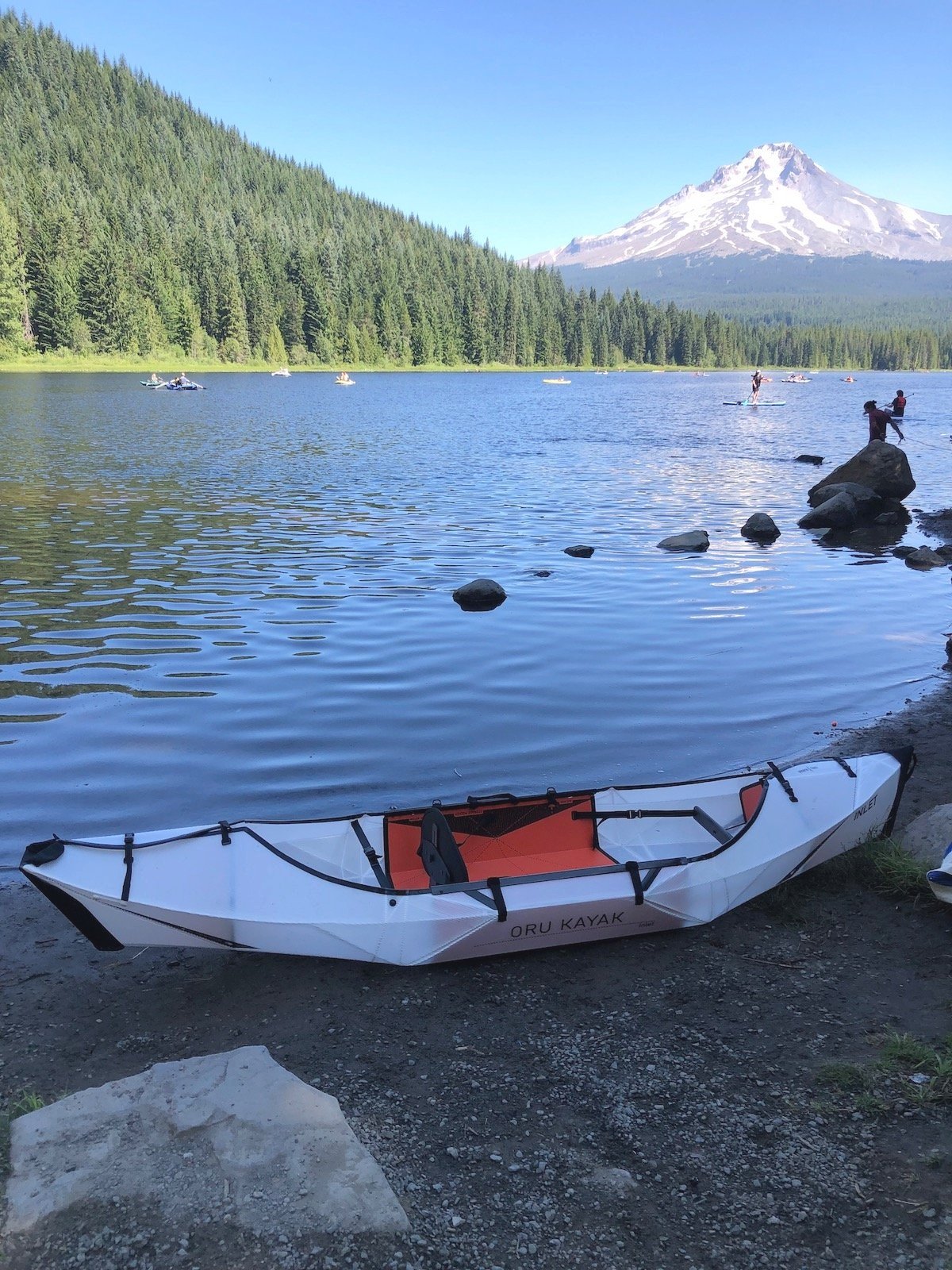








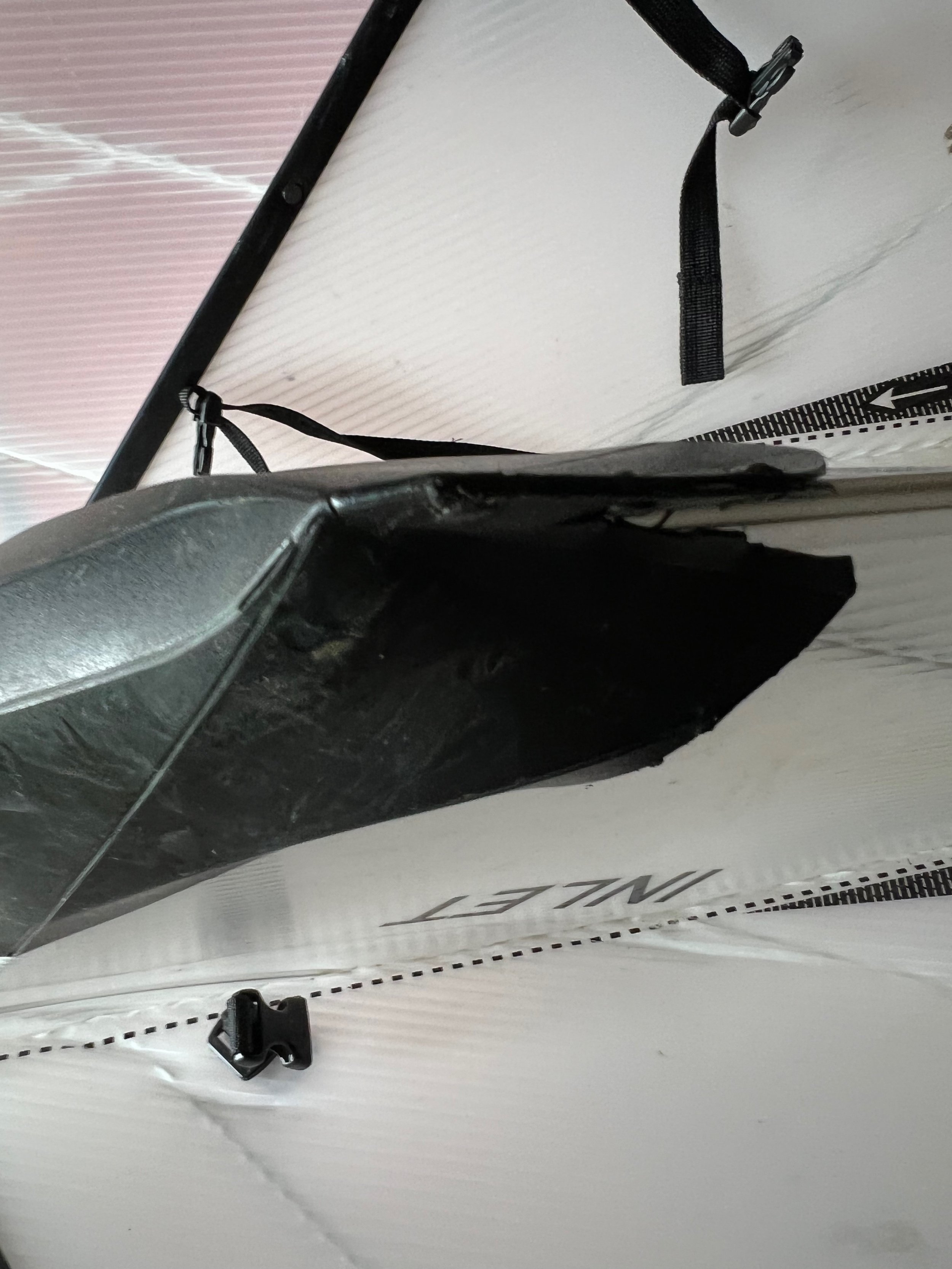


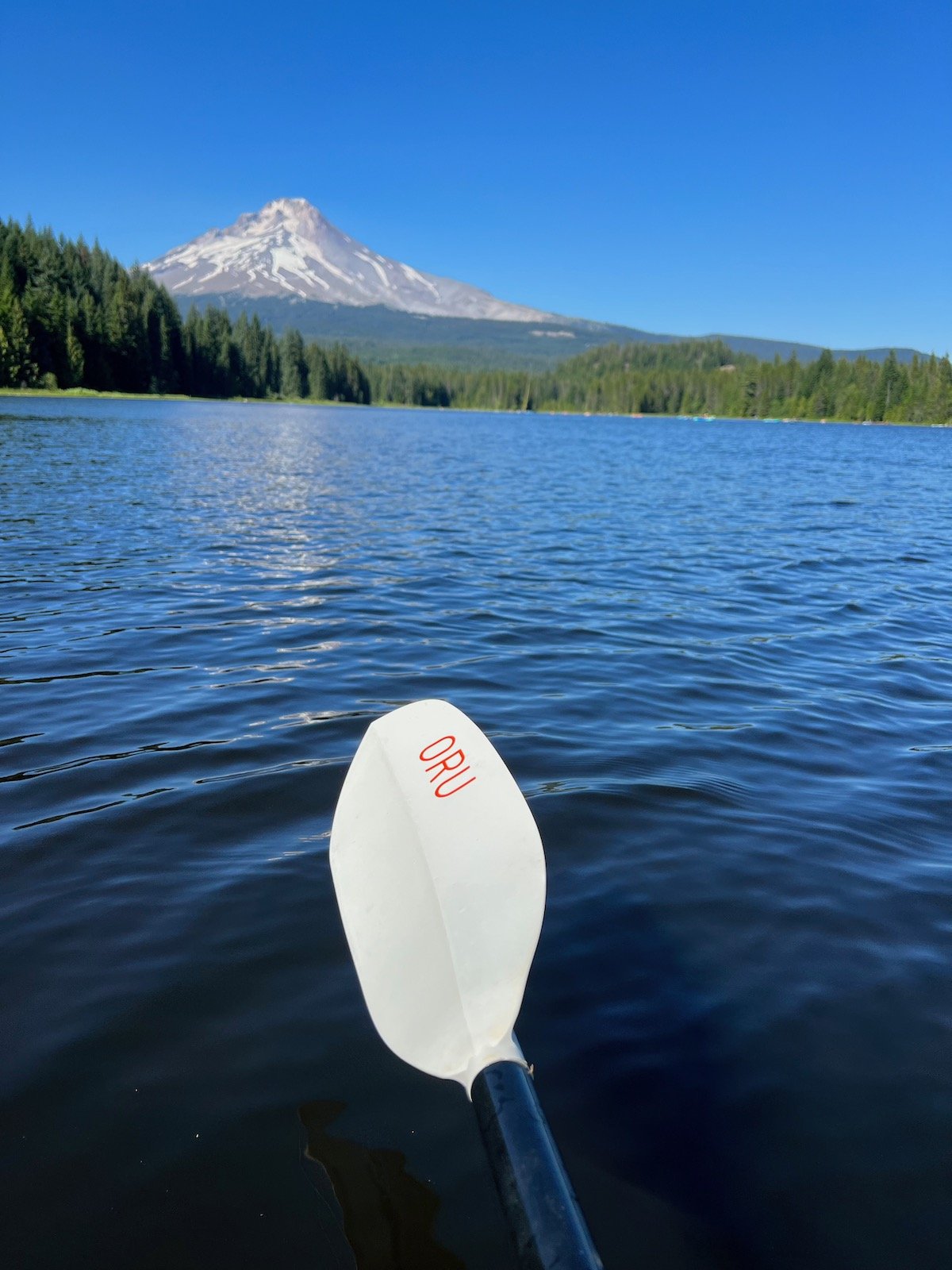

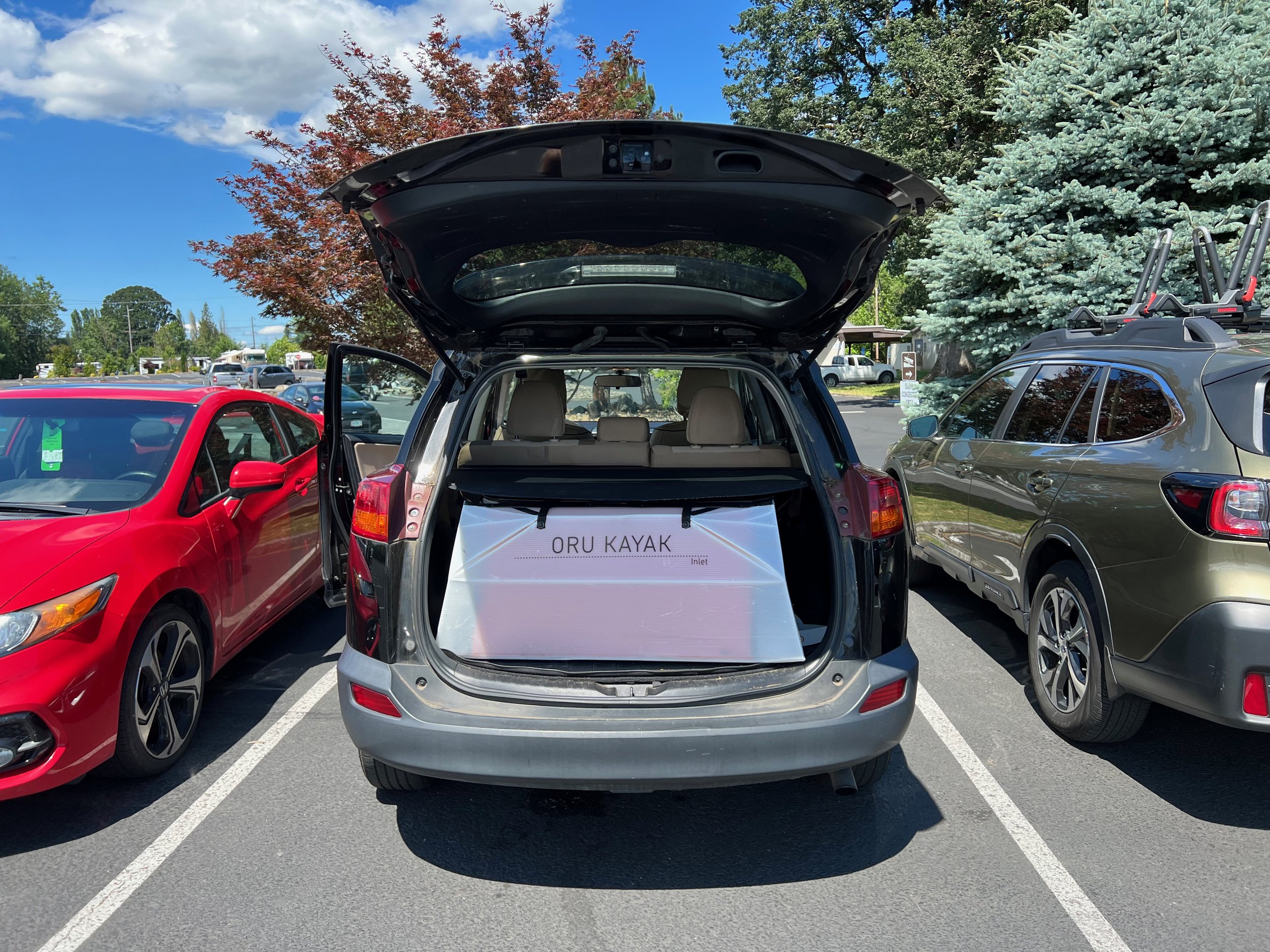

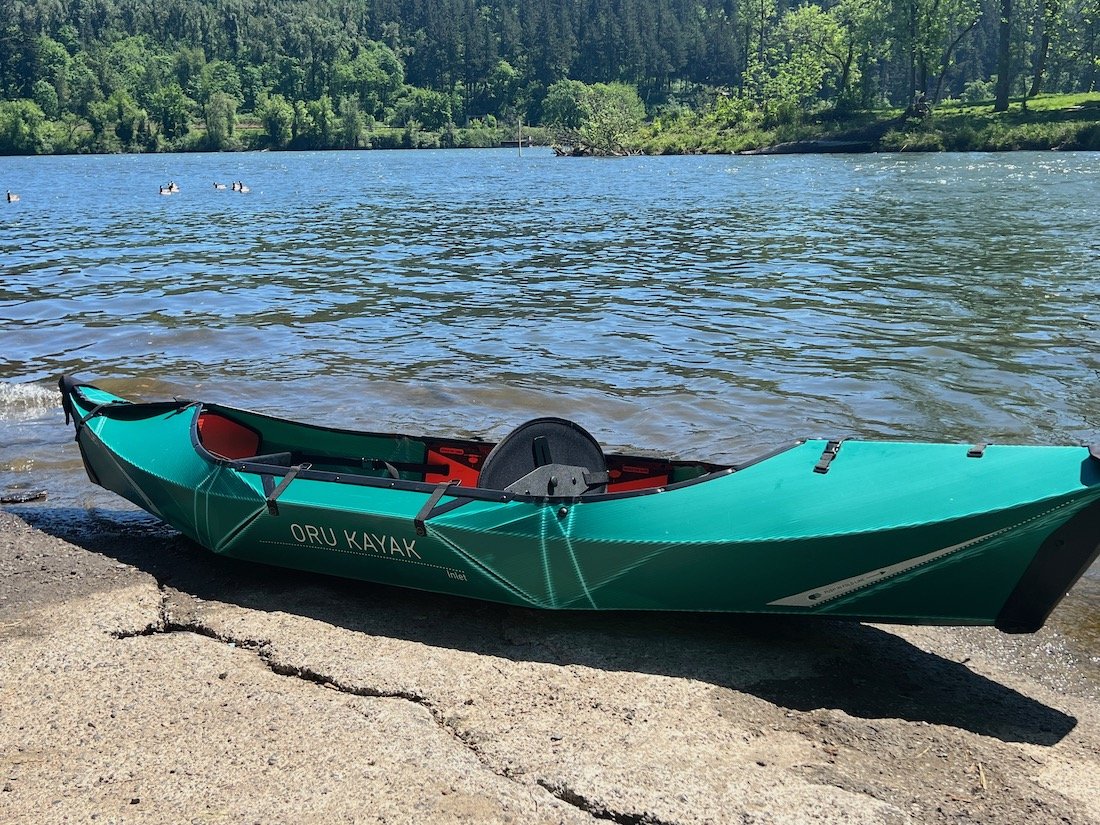
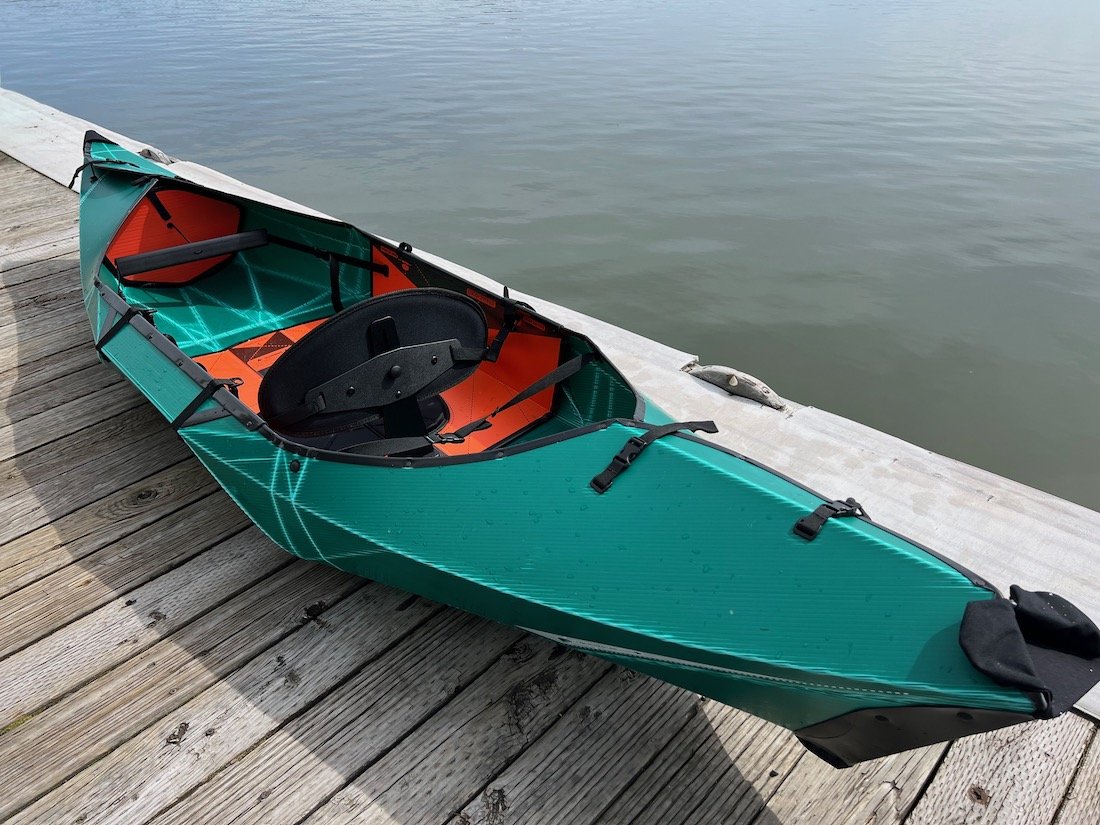
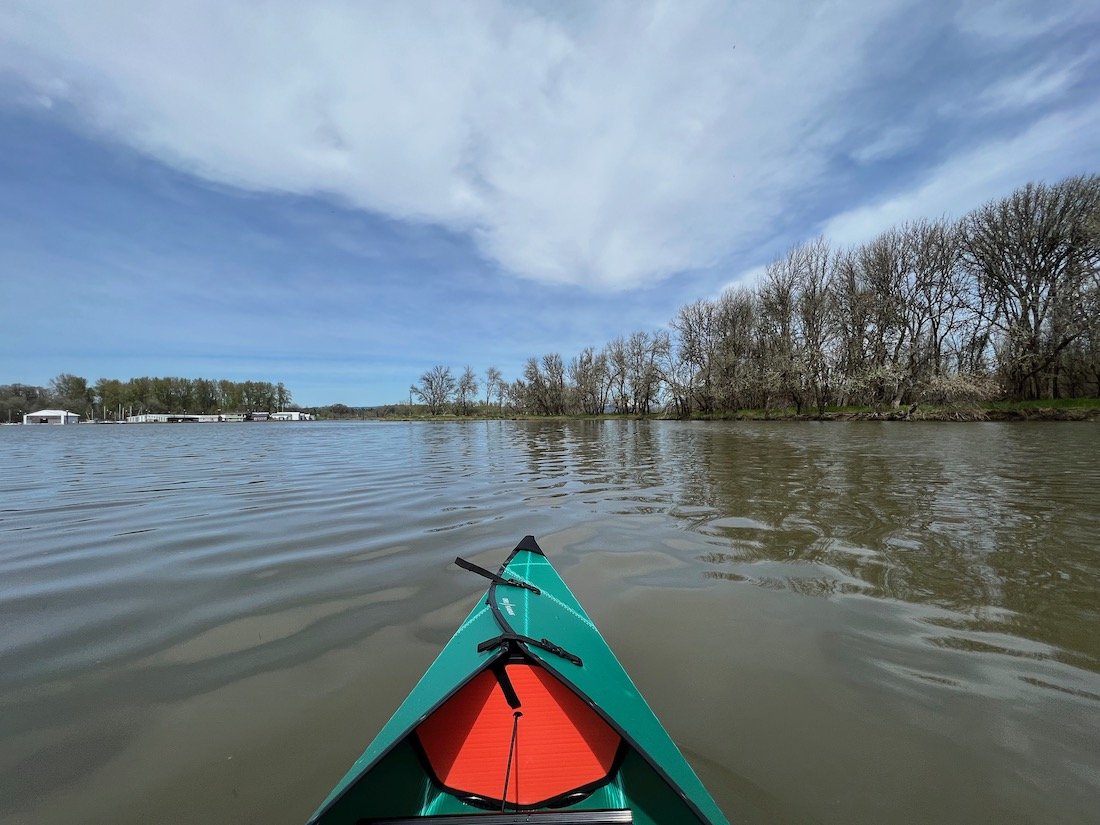


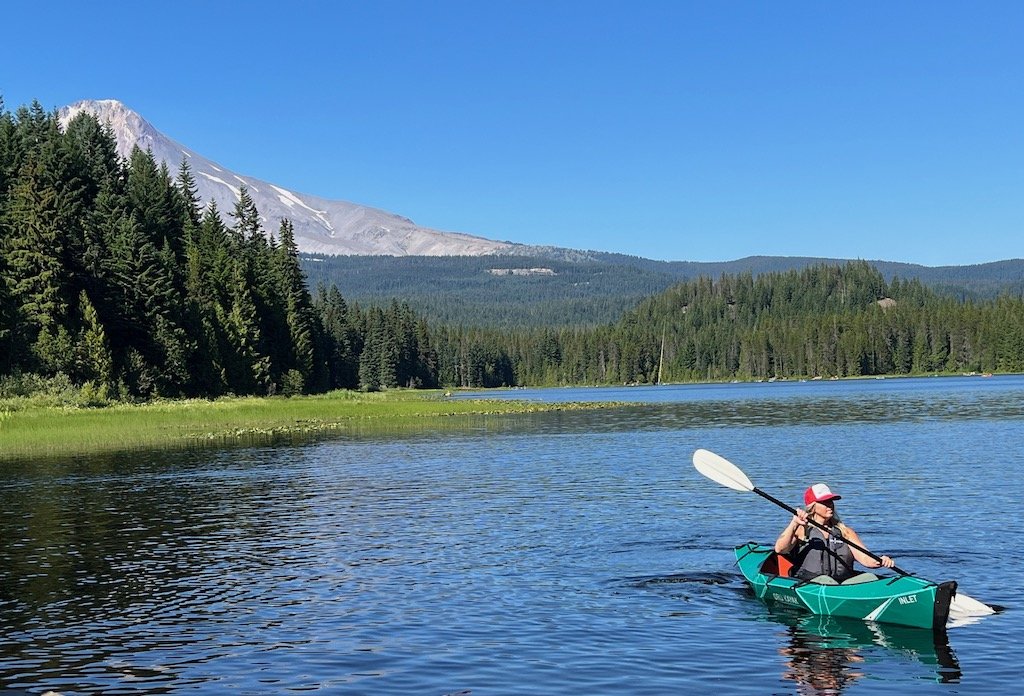

![RV, paddle & play at Blackwell Island RV Park, Coeur d’Alene, Idaho [REVIEW]](https://images.squarespace-cdn.com/content/v1/62c5c6be9225615a8d0231a9/8b7d2def-ed4b-4ee2-aaf7-9622e7cc19e8/Blackwell-Island-Idaho-CoeurDalene-KayakRentals.jpeg)
Check out photos of a charming houseboat cabin rental in Oregon for your next kayaking adventure.